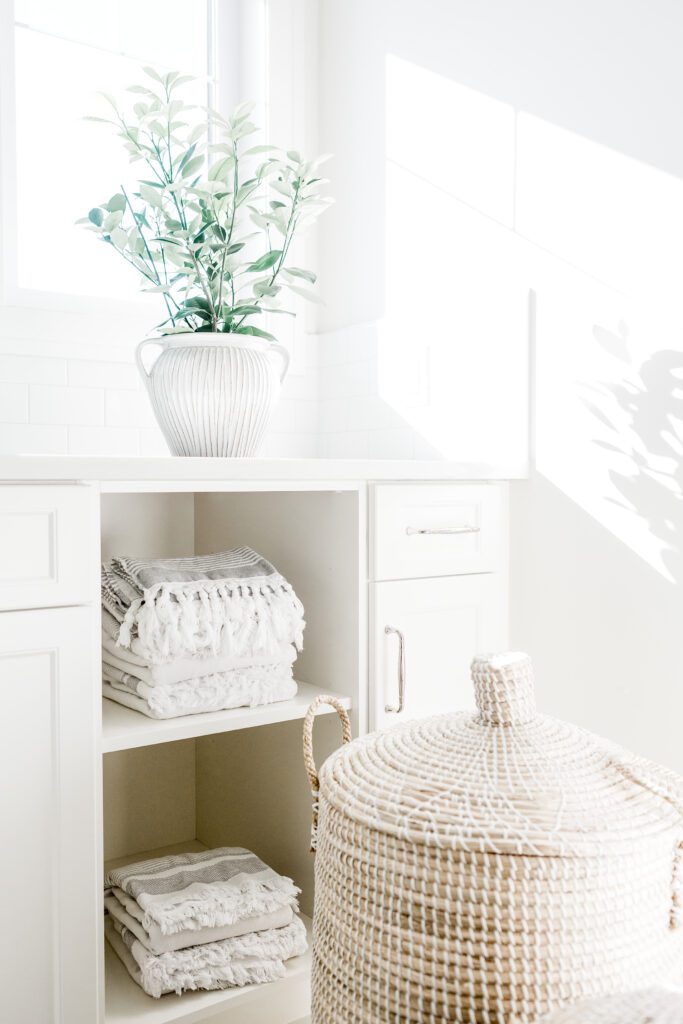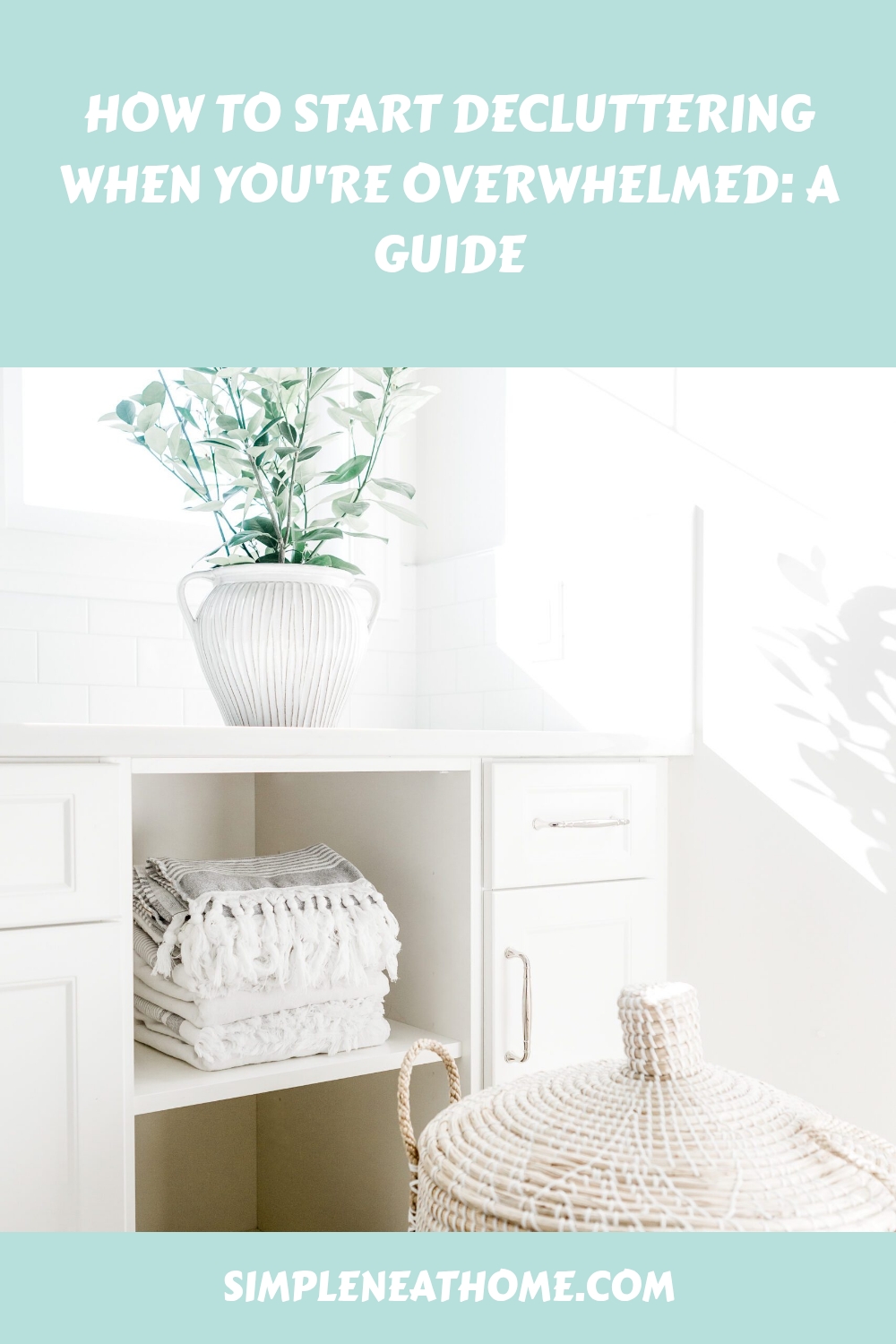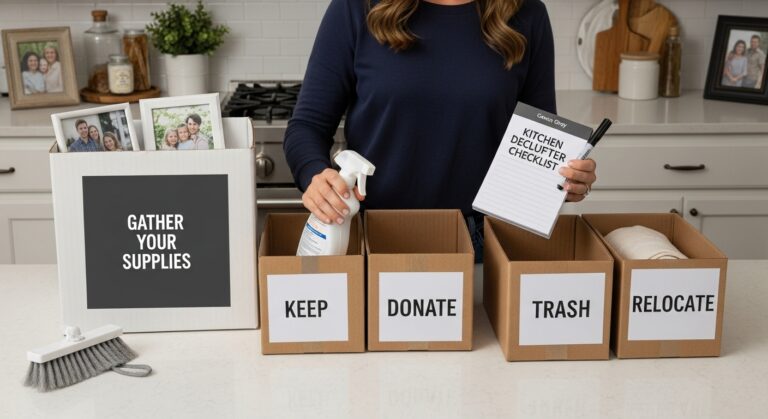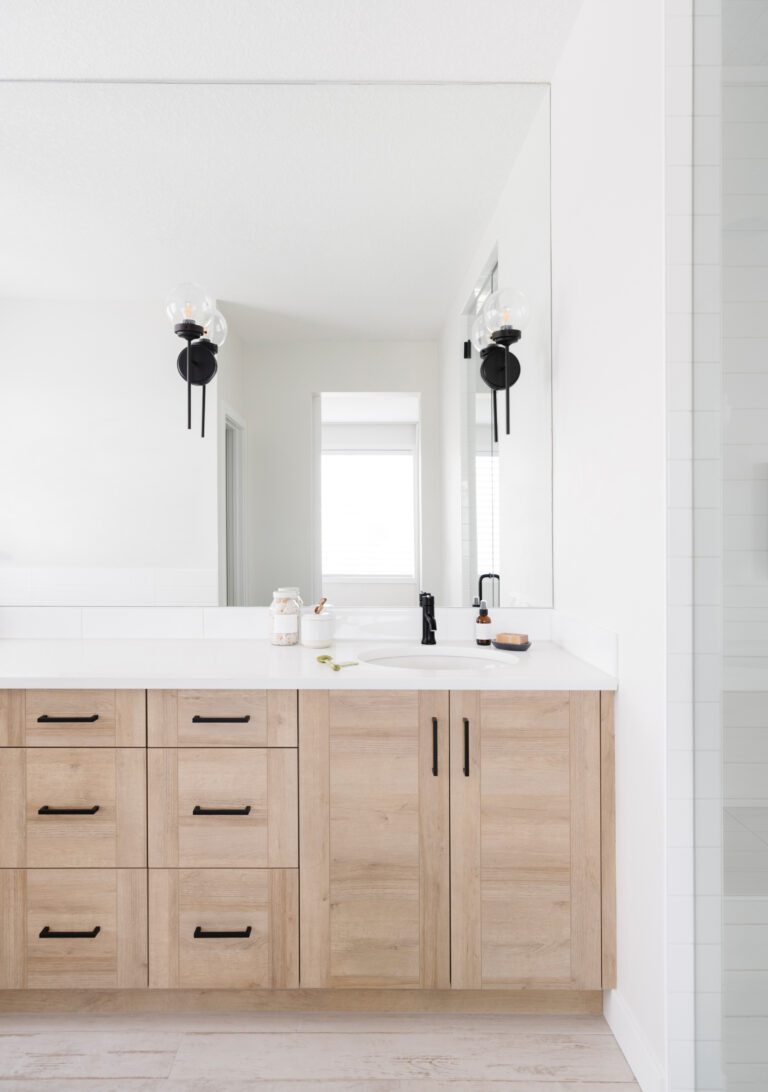How to Start Decluttering When You’re Overwhelmed: A Guide
Is a cluttered home getting you down? I get it. It’s hard to relax in a cluttered, busy home and the thought of decluttering your entire home in one go is really overwhelming. But fear not! This blog post will guide you the easy way to start decluttering when you’re overwhelmed. With practical tips, you’ll learn how to take the first steps toward a clutter-free and stress-free space.

Why Do We Get Overwhelmed by Clutter?
Before diving into the decluttering process, let’s understand why we sometimes find ourselves overwhelmed by clutter. It’s not just about the physical mess; it often reflects our emotional state and the attachments we have to our possessions. Here are some common reasons:
- Sentimental Attachment: We hold onto items due to sentimental value, making it difficult to let go. I’ve still got my wedding dress despite being married for 12 years, and I’ve still got lots of things from when my daughter was little. There’s no benefit to keeping them as I never even look at them so it’s probably time to get rid of them.
- Decision Paralysis: The sheer number of items can lead to decision fatigue, making it challenging to determine what to keep or toss.
- Perfectionism: The desire for a perfectly organised space can be paralysing, as we don’t know where to begin.
- Emotional Baggage: Clutter can represent emotional baggage we’re not ready to confront.
So now we know what the common obstacles are, let’s explore how to overcome them and start your decluttering journey.
How to Start Decluttering When You’re Overwhelmed
Step 1: Embrace a Positive Mindset
Decluttering is not a punishment; it’s a positive step toward a more organised, peaceful life. Shift your mindset from feeling overwhelmed to feeling empowered by:
- Setting Realistic Expectations: Acknowledge that decluttering is a process that takes time, and it’s okay to start small. Whether you start with just a drawer, or go bigger and start with a closet, or a room – the most important thing is to start.
- Visualising the End Result: Imagine how you’ll feel in a clutter-free space, and use that vision as motivation.
- Being Kind to Yourself: Understand that everyone has clutter, and decluttering is a journey, not a destination. There is no definite time limit on when your decluttering needs to start or finish.
Step 2: Start Small
When faced with overwhelming clutter, the idea of tackling it all at once can be paralysing. Instead, start small to build momentum:
- Choose a Tiny Area: Begin with a single drawer, a small closet, or even just one shelf.
- Set a Timer: Dedicate a short, focused block of time, like 15 or 30 minutes, to decluttering. It’s easier than you think to declutter a room in 30 minutes.
- Celebrate Small Wins: Acknowledge your progress, no matter how minor it seems.
You could also try Declutter Your Home in 30 Minutes a Day: The Ultimate Guide to tackle the clutter in small, manageable parts.
Step 3: Create Categories
To declutter effectively, categorise your belongings. This helps you stay organised and focused:
- Keep: Items you truly need, love, and use regularly.
- Donate: Things that are in good condition but no longer serve a purpose for you.
- Sell: Items with value that you can sell or consign.
- Trash: Anything that’s damaged beyond repair or unusable.
- Undecided: If you’re unsure about certain items, create a separate category to revisit later.
Step 4: The One-Year Rule
A helpful guideline is the one-year rule. If you haven’t used or worn an item in the past year, it’s a strong indication that it’s time to let it go. Be honest with yourself about your usage patterns. As my wedding dress hoarding shows, there’s no point keeping something you haven’t worn for 12 years!
Step 5: Declutter by Category
Marie Kondo, a renowned decluttering expert, suggests tackling clutter by category, not by room. This approach helps you see the full extent of your belongings and prevents you from shifting clutter from one room to another. Start with categories like clothing, books, or kitchen items. This is just another way of getting started though.
Step 6: Focus on Sentimental Items Last
Sentimental items often present the biggest emotional hurdle in decluttering. To ease into this, save sentimental items for last. As you build confidence through decluttering less emotionally charged categories, you’ll be better equipped to make decisions about sentimental belongings.
Step 7: Use the “Spark Joy” Test
Marie Kondo’s “spark joy” test is a powerful tool. Hold each item and ask yourself if it sparks joy, ie does it make you happy? Do you love it? If it doesn’t, it’s a candidate for removal. This simple question helps you connect with your emotional attachment to possessions. Here are some more questions to ask to make decluttering easier.
Step 8: Keep, Donate, or Sell
Once you’ve sorted your items into these categories, it’s essential to follow through:
- Keep: Find a designated home for the items you’re keeping and ensure they are organised and easily accessible.
- Donate: Consider local charities, shelters, or thrift stores as options for items you’re donating. Your clutter can be someone else’s treasure.
- Sell: For items with value, explore selling options such as online marketplaces, consignment shops, or garage sales.
Step 9: Reduce, Reuse, Recycle
Be mindful of the environment while decluttering. Reduce waste by recycling items appropriately and disposing of hazardous materials responsibly.
Step 10: Set Up a Maintenance Routine
Once you’ve decluttered, it’s crucial to establish a maintenance routine to prevent clutter from creeping back in. Regularly review your belongings and ensure they align with your goals and lifestyle. You might like How to Maintain an Organised Home With a Family

Additional Tips for Decluttering Success
- Get Support: Enlist the help of a friend or family member who can provide encouragement and assistance during the decluttering process.
- Make a Plan: Setting a goal and thinking about what you want to achieve can help you to stay motivated when it comes to declutter. You might like How to Set Decluttering Goals: Your First Step to Decluttering Success or Do This One Thing Before Starting to Declutter.
- Digital Decluttering: Don’t forget to declutter your digital life, including emails, files, and photos.
- Professional Help: If clutter and disorganisation severely impact your life, consider seeking professional organising help.
It can be hard to start to declutter when you’re overwhelmed, but you’re not alone. Starting the decluttering process when you’re overwhelmed might seem daunting, but with the right mindset and a structured approach, you can reclaim your space and your peace of mind. Remember, decluttering is about making room for the things that truly matter in your life.
So, take a deep breath, start small, and celebrate your progress along the way. With each item you let go of, you’re creating space for a more organised, stress-free, and joyful life. Happy decluttering!








